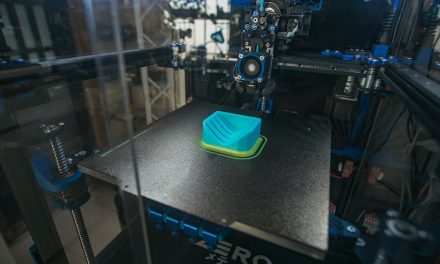Table of Contents
- Introduction
- Benefits of Continuous Performance Management
- Implementing Continuous Performance Management in the Workplace
- Best Practices for Continuous Performance Management
- Tools and Technologies for Continuous Performance Management
- Overcoming Challenges in Continuous Performance Management
- The Role of Feedback in Continuous Performance Management
- Measuring Success in Continuous Performance Management
- Continuous Performance Management vs. Traditional Performance Reviews
- Creating a Culture of Continuous Performance Management
- Q&A
- Conclusion
“Empowering employees to thrive through ongoing feedback and development.”
Introduction
Continuous Performance Management is a modern approach to performance evaluation that involves ongoing feedback, coaching, and goal setting to help employees reach their full potential. This method focuses on regular communication between managers and employees to address performance issues in real-time and provide support and guidance for improvement. By fostering a culture of continuous learning and development, organizations can enhance employee engagement, productivity, and overall performance.
Benefits of Continuous Performance Management
Continuous Performance Management (CPM) is a modern approach to managing employee performance that focuses on ongoing feedback, coaching, and development. Unlike traditional performance reviews that occur once or twice a year, CPM involves regular check-ins between managers and employees to discuss goals, progress, and areas for improvement. This proactive approach to performance management has numerous benefits for both employees and organizations.
One of the key benefits of CPM is improved employee engagement. By providing regular feedback and coaching, employees feel more supported and valued in their roles. This can lead to increased motivation, productivity, and job satisfaction. When employees know that their managers are invested in their success and development, they are more likely to be engaged and committed to their work.
Another benefit of CPM is increased transparency and communication. Regular check-ins allow for open and honest conversations about performance, goals, and expectations. This transparency helps to build trust between managers and employees, leading to better working relationships and a more positive work environment. When employees feel that they can openly discuss their performance and receive constructive feedback, they are more likely to improve and grow in their roles.
CPM also helps to identify and address performance issues in a timely manner. By having regular check-ins, managers can quickly identify any areas where employees may be struggling and provide support and guidance to help them improve. This proactive approach to performance management can prevent small issues from turning into larger problems and ultimately lead to better overall performance and results.
In addition, CPM allows for more personalized development and coaching. By having regular conversations about goals and progress, managers can tailor their coaching and support to meet the individual needs of each employee. This personalized approach to development can help employees reach their full potential and achieve their career goals.
Furthermore, CPM can lead to a more agile and responsive organization. By regularly reviewing and adjusting goals and priorities, teams can quickly adapt to changing business needs and market conditions. This flexibility and agility are essential in today’s fast-paced and competitive business environment.
Overall, Continuous Performance Management offers numerous benefits for both employees and organizations. From improved employee engagement and communication to timely issue identification and personalized development, CPM can help drive better performance and results. By embracing this modern approach to performance management, organizations can create a culture of continuous improvement and growth that benefits everyone involved.
Implementing Continuous Performance Management in the Workplace
Continuous Performance Management (CPM) is a modern approach to managing employee performance that focuses on regular feedback, coaching, and goal setting. Unlike traditional performance reviews that occur once or twice a year, CPM involves ongoing conversations between managers and employees to ensure alignment, development, and engagement. Implementing CPM in the workplace can lead to improved employee performance, increased productivity, and higher levels of employee satisfaction.
One of the key components of CPM is regular feedback. Instead of waiting for an annual performance review to provide feedback, managers are encouraged to give feedback in real-time. This allows employees to make immediate adjustments and improvements, leading to better performance outcomes. By providing feedback on a continuous basis, managers can address issues as they arise and recognize achievements in a timely manner.
In addition to feedback, CPM also emphasizes coaching. Managers are expected to act as coaches, guiding employees towards their goals and helping them develop their skills. Coaching sessions can focus on areas for improvement, career development, or skill enhancement. By providing ongoing coaching, managers can support employees in reaching their full potential and achieving their objectives.
Goal setting is another important aspect of CPM. Employees and managers work together to set clear, achievable goals that are aligned with the organization’s objectives. By setting goals that are specific, measurable, achievable, relevant, and time-bound (SMART), employees have a clear roadmap for success. Regular check-ins are conducted to track progress towards these goals and make any necessary adjustments.
Implementing CPM in the workplace requires a shift in mindset and culture. Managers must be trained on how to provide effective feedback, coaching, and goal setting. Employees need to understand the benefits of CPM and be willing to participate in the process. Communication is key in ensuring that everyone is on board and committed to making CPM a success.
One of the challenges of implementing CPM is resistance to change. Some employees may be accustomed to the traditional performance review process and may be hesitant to embrace a new way of managing performance. It is important for managers to communicate the benefits of CPM and address any concerns or misconceptions that employees may have. By involving employees in the process and soliciting their feedback, managers can help ease the transition to CPM.
Another challenge of implementing CPM is the time and resources required to maintain regular feedback, coaching, and goal setting. Managers may feel overwhelmed by the additional responsibilities that come with CPM, especially if they are already juggling multiple tasks. It is important for organizations to provide support and resources to help managers effectively implement CPM. This may include training, tools, and technology to streamline the process.
Despite the challenges, the benefits of implementing CPM in the workplace are significant. By focusing on regular feedback, coaching, and goal setting, organizations can improve employee performance, increase productivity, and boost employee engagement. CPM creates a culture of continuous improvement and development, where employees are empowered to reach their full potential. By embracing CPM, organizations can stay ahead of the curve and drive success in today’s fast-paced business environment.
Best Practices for Continuous Performance Management
Continuous Performance Management (CPM) is a modern approach to managing employee performance that has gained popularity in recent years. Unlike traditional performance reviews that occur once or twice a year, CPM involves ongoing feedback and coaching to help employees improve and grow. This article will explore the best practices for implementing CPM in your organization.
One of the key components of CPM is regular check-ins between managers and employees. These check-ins can take many forms, from informal conversations to structured meetings. The goal is to provide employees with timely feedback on their performance, address any issues or concerns, and set goals for improvement. By having these conversations on a regular basis, managers can better support their employees and help them succeed.
Another important aspect of CPM is goal setting. Setting clear, measurable goals is essential for helping employees understand what is expected of them and how their performance will be evaluated. Goals should be specific, achievable, and aligned with the overall objectives of the organization. By setting goals that are challenging but attainable, employees are more likely to stay motivated and engaged in their work.
In addition to regular check-ins and goal setting, CPM also involves ongoing feedback and coaching. Managers should provide feedback to employees on a regular basis, both positive and constructive. This feedback should be specific, actionable, and focused on behaviors rather than personality traits. By providing feedback in a timely manner, managers can help employees improve their performance and develop their skills.
Coaching is another important aspect of CPM. Managers should act as coaches, helping employees identify their strengths and weaknesses, set goals for improvement, and develop a plan to achieve those goals. Coaching should be a collaborative process, with both the manager and the employee working together to create a development plan that is tailored to the individual’s needs and aspirations.
One of the benefits of CPM is that it allows for more frequent and meaningful performance evaluations. Instead of relying on a single annual review, managers can provide ongoing feedback and coaching throughout the year. This approach helps to ensure that employees are receiving the support and guidance they need to succeed, and allows for more timely interventions if performance issues arise.
Implementing CPM in your organization requires a shift in mindset and a commitment to ongoing communication and feedback. Managers must be willing to invest the time and effort required to support their employees and help them succeed. By creating a culture of continuous improvement and development, organizations can drive better performance and engagement among their employees.
In conclusion, Continuous Performance Management is a valuable tool for helping employees reach their full potential. By implementing best practices such as regular check-ins, goal setting, feedback, and coaching, organizations can create a culture of continuous improvement and development. By investing in their employees’ growth and development, organizations can drive better performance and achieve their business objectives.
Tools and Technologies for Continuous Performance Management

Continuous Performance Management (CPM) is a modern approach to managing employee performance that focuses on ongoing feedback, coaching, and development. Unlike traditional performance reviews that occur once or twice a year, CPM involves regular check-ins between managers and employees to discuss goals, progress, and areas for improvement. This real-time feedback allows for quicker course corrections and helps employees stay engaged and motivated.
One of the key tools used in Continuous Performance Management is performance management software. These platforms provide a centralized location for setting goals, tracking progress, and documenting feedback. They also often include features such as 360-degree feedback, goal alignment, and performance analytics. By using performance management software, organizations can streamline their performance management processes and ensure that feedback is timely and actionable.
Another important aspect of Continuous Performance Management is the use of regular check-ins. These meetings, which can be weekly, bi-weekly, or monthly, provide an opportunity for managers and employees to discuss progress towards goals, address any challenges or roadblocks, and provide feedback on performance. By having these regular conversations, managers can provide ongoing support and guidance to their employees, helping them to succeed and grow in their roles.
In addition to performance management software and regular check-ins, Continuous Performance Management also involves setting clear and measurable goals. By establishing specific objectives for each employee, managers can provide a roadmap for success and ensure that everyone is working towards the same outcomes. These goals should be SMART (Specific, Measurable, Achievable, Relevant, and Time-bound) to ensure that they are meaningful and achievable.
Feedback is another critical component of Continuous Performance Management. In addition to regular check-ins, managers should provide ongoing feedback to their employees to help them understand their strengths and areas for improvement. This feedback should be specific, constructive, and timely to be effective. By providing regular feedback, managers can help employees to continuously improve and develop their skills.
Continuous Performance Management also involves coaching and development. Managers should work with their employees to identify areas for growth and provide opportunities for learning and development. This could include training programs, mentoring, or stretch assignments. By investing in the development of their employees, organizations can build a strong and capable workforce that is prepared to meet the challenges of the future.
Overall, Continuous Performance Management is a holistic approach to managing employee performance that focuses on ongoing feedback, coaching, and development. By using tools such as performance management software, regular check-ins, goal setting, feedback, and coaching, organizations can create a culture of continuous improvement and growth. This approach not only benefits individual employees but also contributes to the overall success of the organization. By embracing Continuous Performance Management, organizations can ensure that their employees are engaged, motivated, and performing at their best.
Overcoming Challenges in Continuous Performance Management
Continuous Performance Management (CPM) is a modern approach to managing employee performance that focuses on ongoing feedback, coaching, and development. Unlike traditional performance reviews that occur once or twice a year, CPM involves regular check-ins between managers and employees to discuss goals, progress, and areas for improvement. While CPM has many benefits, such as increased employee engagement and productivity, it also comes with its own set of challenges that organizations must overcome to successfully implement this approach.
One of the main challenges of CPM is ensuring that managers and employees are committed to the process. In traditional performance management systems, managers may be used to conducting annual reviews and providing feedback in a more formal setting. Transitioning to a more continuous feedback model requires a shift in mindset and behavior for both managers and employees. Managers must be willing to have regular conversations with their team members and provide timely feedback, while employees must be open to receiving feedback and actively participating in the process.
To overcome this challenge, organizations can provide training and support to help managers and employees understand the benefits of CPM and how to effectively engage in the process. This may include workshops on giving and receiving feedback, coaching on goal setting and performance conversations, and ongoing support from HR or leadership teams. By investing in training and development, organizations can help ensure that managers and employees are equipped to successfully implement CPM.
Another challenge of CPM is the need for effective communication and collaboration between managers and employees. In a continuous feedback model, it is essential that managers and employees are aligned on goals, expectations, and performance metrics. Without clear communication and collaboration, feedback can become ineffective and goals may not be achieved.
To address this challenge, organizations can implement tools and technologies that facilitate communication and collaboration between managers and employees. This may include performance management software that allows for real-time feedback, goal tracking, and performance reviews. By leveraging technology, organizations can streamline the CPM process and ensure that managers and employees are on the same page when it comes to performance expectations.
Additionally, organizations can encourage a culture of transparency and openness to foster effective communication and collaboration. By creating a safe space for feedback and dialogue, managers and employees can feel comfortable sharing their thoughts, concerns, and ideas. This can help build trust and strengthen relationships within the organization, leading to better performance outcomes.
One final challenge of CPM is the need for ongoing evaluation and adjustment of performance goals and metrics. In a dynamic and fast-paced work environment, goals and priorities can change quickly, requiring managers and employees to adapt and pivot as needed. Without regular evaluation and adjustment, performance management can become stagnant and ineffective.
To overcome this challenge, organizations can implement regular check-ins and performance reviews to assess progress, identify areas for improvement, and adjust goals as needed. By regularly evaluating performance and making adjustments as necessary, organizations can ensure that employees are focused on the right priorities and are working towards achieving their goals.
In conclusion, while Continuous Performance Management offers many benefits for organizations, it also comes with its own set of challenges that must be overcome. By addressing issues such as commitment, communication, and evaluation, organizations can successfully implement CPM and reap the rewards of a more engaged and productive workforce. Through training, technology, and a culture of transparency, organizations can create a performance management system that drives success and growth for both employees and the organization as a whole.
The Role of Feedback in Continuous Performance Management
Continuous Performance Management (CPM) is a modern approach to managing employee performance that focuses on providing ongoing feedback and coaching rather than relying on annual performance reviews. In this article, we will explore the role of feedback in CPM and how it can help organizations improve employee performance and drive business results.
Feedback is a critical component of CPM as it provides employees with valuable information about their performance, strengths, and areas for improvement. Unlike traditional performance reviews, which often focus on past performance, feedback in CPM is timely, specific, and actionable. This real-time feedback allows employees to make immediate adjustments and improvements, leading to better performance outcomes.
One of the key benefits of feedback in CPM is its ability to foster a culture of continuous learning and development within an organization. By providing regular feedback, managers can help employees identify their strengths and weaknesses, set goals for improvement, and track their progress over time. This ongoing dialogue between managers and employees creates a supportive environment where employees feel empowered to take ownership of their development and growth.
Feedback in CPM also plays a crucial role in aligning individual performance with organizational goals and objectives. By providing employees with clear expectations and feedback on how their performance contributes to the overall success of the organization, managers can ensure that everyone is working towards the same goals. This alignment helps drive employee engagement, motivation, and productivity, ultimately leading to improved business outcomes.
In addition to improving individual performance, feedback in CPM can also help identify trends and patterns across teams and departments. By analyzing feedback data, organizations can identify areas of strength and areas for improvement at the team or organizational level. This insight can inform strategic decision-making, resource allocation, and talent development initiatives, helping organizations drive continuous improvement and innovation.
To effectively leverage feedback in CPM, organizations must establish a culture of open communication and trust. Managers should be trained on how to deliver feedback effectively, focusing on specific behaviors and outcomes rather than personal characteristics. Employees should also be encouraged to seek feedback from their peers, mentors, and other stakeholders to gain a well-rounded perspective on their performance.
Technology plays a crucial role in enabling feedback in CPM by providing tools and platforms for capturing, analyzing, and sharing feedback data. Performance management software allows managers to track employee performance, set goals, and provide feedback in real-time. These tools also facilitate ongoing performance conversations, coaching sessions, and development planning, making it easier for managers and employees to stay aligned and focused on continuous improvement.
In conclusion, feedback is a cornerstone of Continuous Performance Management, driving employee development, alignment with organizational goals, and continuous improvement. By establishing a culture of open communication, leveraging technology, and providing timely, specific feedback, organizations can create a high-performance culture that drives business results. Embracing feedback as a key component of CPM can help organizations unlock the full potential of their employees and achieve sustainable growth and success.
Measuring Success in Continuous Performance Management
Continuous Performance Management (CPM) is a modern approach to managing employee performance that focuses on ongoing feedback, coaching, and development. Unlike traditional performance reviews that occur once or twice a year, CPM involves regular check-ins between managers and employees to discuss goals, progress, and areas for improvement. By providing real-time feedback and support, CPM aims to improve employee engagement, productivity, and overall performance.
One of the key components of CPM is setting clear and measurable goals. These goals should be specific, achievable, relevant, and time-bound. By establishing clear expectations, employees know what is expected of them and can track their progress towards achieving their goals. Regular check-ins with managers allow employees to discuss their progress, receive feedback, and make adjustments as needed. This ongoing dialogue helps to keep employees motivated and focused on their goals.
In addition to setting goals, CPM also involves providing regular feedback to employees. Feedback should be timely, specific, and constructive. Managers should praise employees for their accomplishments and provide guidance on areas for improvement. By providing feedback on a regular basis, employees can make adjustments to their performance and continue to grow and develop in their roles.
Another important aspect of CPM is coaching and development. Managers should work with employees to identify their strengths and areas for improvement, and provide opportunities for growth and development. This could include training, mentoring, or job rotations. By investing in employee development, organizations can help employees reach their full potential and contribute more effectively to the success of the organization.
Measuring success in CPM involves tracking key performance indicators (KPIs) to assess employee performance and progress towards goals. KPIs could include metrics such as sales targets, customer satisfaction scores, or project deadlines. By monitoring these KPIs on a regular basis, managers can identify trends, address performance issues, and make data-driven decisions to improve employee performance.
One of the benefits of CPM is that it allows for more frequent and meaningful performance conversations between managers and employees. By having regular check-ins, managers can address performance issues in a timely manner and provide support and guidance to help employees succeed. This ongoing dialogue helps to build trust and rapport between managers and employees, leading to a more positive and productive work environment.
In conclusion, Continuous Performance Management is a modern approach to managing employee performance that focuses on ongoing feedback, coaching, and development. By setting clear goals, providing regular feedback, and investing in employee development, organizations can improve employee engagement, productivity, and overall performance. Measuring success in CPM involves tracking key performance indicators to assess employee performance and progress towards goals. By implementing CPM practices, organizations can create a culture of continuous improvement and drive success in the workplace.
Continuous Performance Management vs. Traditional Performance Reviews
Continuous Performance Management (CPM) is a modern approach to managing employee performance that has gained popularity in recent years. Unlike traditional performance reviews, which typically occur once or twice a year, CPM involves ongoing feedback and coaching between managers and employees. This shift in focus from annual reviews to continuous feedback has been shown to improve employee engagement, productivity, and overall performance.
One of the key differences between CPM and traditional performance reviews is the frequency of feedback. In a traditional performance review, employees may only receive feedback on their performance once or twice a year, which can make it difficult for them to make meaningful improvements. In contrast, CPM involves regular check-ins between managers and employees, allowing for more timely feedback and coaching. This ongoing dialogue helps employees stay on track and address any issues as they arise, rather than waiting for an annual review to discuss them.
Another important aspect of CPM is the emphasis on goal setting and development. In a traditional performance review, employees may receive vague or outdated goals that do not align with the organization’s current priorities. With CPM, employees work with their managers to set clear, achievable goals that are tied to the organization’s overall objectives. This focus on goal setting helps employees understand what is expected of them and gives them a roadmap for success.
CPM also encourages a growth mindset, where employees are encouraged to learn and develop their skills. Managers play a key role in this process by providing regular feedback and coaching to help employees improve. This ongoing support helps employees feel valued and motivated to succeed, leading to higher levels of engagement and performance.
In addition to the benefits for employees, CPM also offers advantages for managers and organizations. By providing regular feedback and coaching, managers can address performance issues in a timely manner and help employees reach their full potential. This proactive approach to performance management can lead to higher levels of employee satisfaction and retention, as well as improved overall performance for the organization.
Overall, CPM represents a shift towards a more modern and effective approach to managing employee performance. By focusing on ongoing feedback, goal setting, and development, CPM helps employees stay engaged and motivated to succeed. This approach benefits both employees and organizations, leading to higher levels of performance and success.
In conclusion, understanding Continuous Performance Management is essential for organizations looking to improve employee engagement and performance. By shifting from traditional performance reviews to a more continuous feedback model, organizations can help employees reach their full potential and achieve their goals. With the right support and guidance, employees can thrive in a culture of continuous improvement and growth.
Creating a Culture of Continuous Performance Management
Continuous Performance Management (CPM) is a modern approach to managing employee performance that focuses on ongoing feedback, coaching, and development. Unlike traditional performance reviews that occur once or twice a year, CPM involves regular check-ins between managers and employees to discuss goals, progress, and areas for improvement. This proactive approach to performance management has been gaining popularity in recent years as organizations seek to create a more agile and responsive workforce.
One of the key benefits of CPM is its emphasis on real-time feedback. Instead of waiting months to receive feedback on their performance, employees are able to receive feedback on a regular basis, allowing them to make adjustments and improvements in a timely manner. This continuous feedback loop helps employees stay engaged and motivated, as they are able to see the impact of their efforts in real-time.
Another important aspect of CPM is the focus on coaching and development. Managers are encouraged to take on a more supportive role, helping employees set goals, identify areas for improvement, and develop their skills. By providing ongoing coaching and support, managers can help employees reach their full potential and contribute more effectively to the organization.
In order to successfully implement CPM, organizations must create a culture that supports continuous feedback and development. This involves training managers on how to provide effective feedback, setting clear expectations for performance, and creating a supportive environment where employees feel comfortable discussing their goals and challenges.
One of the key challenges in implementing CPM is overcoming resistance to change. Many employees and managers are accustomed to the traditional performance review process and may be hesitant to embrace a new approach. To address this challenge, organizations must communicate the benefits of CPM and provide training and support to help employees and managers make the transition.
Another important aspect of creating a culture of CPM is the use of technology. There are a variety of performance management tools available that can help facilitate ongoing feedback, goal setting, and development. These tools can streamline the performance management process, making it easier for managers and employees to track progress and stay on top of goals.
Ultimately, creating a culture of continuous performance management requires a shift in mindset. Instead of viewing performance management as a once-a-year event, organizations must embrace the idea of ongoing feedback and development. By creating a culture that supports continuous performance management, organizations can improve employee engagement, productivity, and overall performance.
In conclusion, continuous performance management is a modern approach to managing employee performance that focuses on ongoing feedback, coaching, and development. By creating a culture that supports continuous feedback and development, organizations can improve employee engagement, productivity, and overall performance. With the right training, support, and technology, organizations can successfully implement CPM and create a more agile and responsive workforce.
Q&A
1. What is continuous performance management?
Continuous performance management is an approach to managing employee performance that involves ongoing feedback, coaching, and goal setting.
2. How does continuous performance management differ from traditional performance reviews?
Continuous performance management involves more frequent feedback and coaching, as well as a focus on setting and adjusting goals throughout the year, rather than just during an annual review.
3. What are the benefits of continuous performance management?
Benefits of continuous performance management include improved employee engagement, increased productivity, better alignment of individual and organizational goals, and faster identification and resolution of performance issues.
4. How can organizations implement continuous performance management?
Organizations can implement continuous performance management by providing training to managers on giving effective feedback, setting clear goals, and coaching employees to improve performance.
5. What role does technology play in continuous performance management?
Technology can support continuous performance management by providing tools for tracking goals, giving feedback, and facilitating ongoing communication between managers and employees.
6. How can employees benefit from continuous performance management?
Employees can benefit from continuous performance management by receiving more frequent feedback on their performance, having clearer expectations for their goals, and having opportunities for professional development and growth.
7. What challenges might organizations face when implementing continuous performance management?
Challenges organizations might face when implementing continuous performance management include resistance from managers or employees who are used to traditional performance review processes, as well as the need for ongoing training and support for managers.
8. How can organizations measure the success of their continuous performance management initiatives?
Organizations can measure the success of their continuous performance management initiatives by tracking key performance indicators such as employee engagement, productivity, retention rates, and the achievement of individual and organizational goals.
9. What are some best practices for implementing continuous performance management?
Best practices for implementing continuous performance management include setting clear expectations for goals and feedback, providing regular training and support for managers, encouraging open communication between managers and employees, and continuously evaluating and adjusting the performance management process.
Conclusion
Continuous Performance Management is a valuable approach to employee development and feedback that allows for ongoing communication and goal setting. By providing regular feedback and coaching, organizations can help employees reach their full potential and drive overall performance. Embracing this method can lead to increased employee engagement, productivity, and satisfaction, ultimately benefiting both the individual and the organization as a whole.





